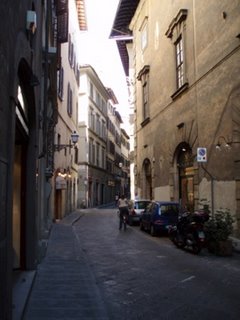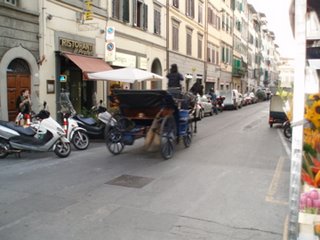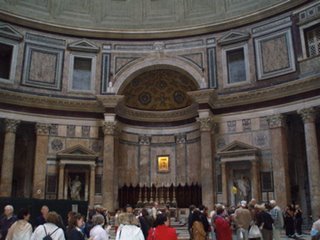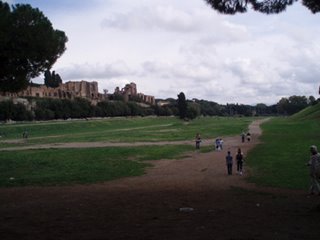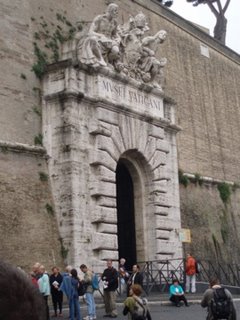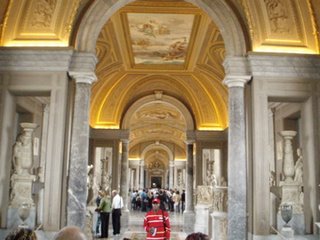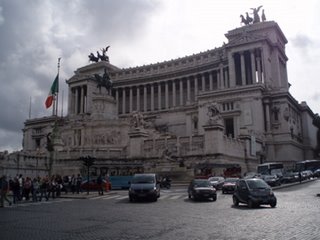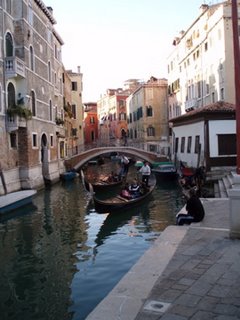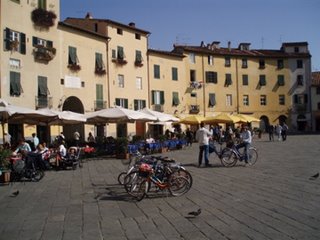The first five days of our trip to Italy were spent in Florence. After landing at the Rome airport, we immediately traveled there by train and along the way enjoyed views of the countryside, including feathery umbrella pines, vineyards, and the buildings we would see throughout the trip that featured what I think of as Mediterranian colors (golds to tans to salmons, along with tile roofs). There we walked a few blocks to the apartment of our hosts, David and Donna Curry, who were spending the entire month of October there. Their apartment was on the third floor of a building facing the Arno river, and doors leading to a balcony allowed us to enjoy a great view of the southern part of the city and on into the Tuscan countryside. We spent more than one evening on that balcony enjoying a glass of wine, conversation, and watching the sunsets over the hills.



Florence is the prominent city in Tuscany, which is one of 20 named regions making up the whole of Italy. It is, perhaps not arguably, the birthplace of the Renaissance. Accordingly, the city is literally filled with art and architecture, often commingled. Moreover, one is easily drawn into the fascinating history of the city and the region, which is woven together with the art and architecture. We began our introduction to Florence with a walking tour, led by a very knowledgeable history and art history student originally from UW-Madison. A little of what we saw is described below. Not surprisingly, one is not usually allowed to take photographs of interior artwork, so most of our pictures are exterior shots. However, with the numerous frescos, mosaics, and sculptures, there is still plenty to capture.
Orsanmichelle, originally a grainery but eventually converted into a church, has a number of exterior niches holding sculptures of patron saints of the powerful guilds (trade unions) that controlled Florence prior to and throughout the Renaissance. For example, here is a sculpture by Donatello of Saint Mark, which was commissioned by the textile guild. Another shows our guide describing the Saint George bronze sculpture, also by Donatello, commissioned by the armor guild.


The Medici family played a dominant role in Florence through the Renaissance and beyond, especially in the early years as they established a strong banking business. Below is an example of their family crest which appears frequently in the city. The balls, which appear in red on painted versions, are the subject of much speculation, but may represent pawn brokers. Click
here for more information.

Central Florence contains several piazzas or public gathering places. One, the Piazza della Signoria, is where much of the politics and history played out in the 14th through 16th centuries. Surrounding that piazza is the Palazzo Vecchio (palazzo means palace), which is pictured below. Its clock tower stands out in most long distance or aerial view of Florence. You can see that in front of the palazzo is a replica of Michelangelo's famous sculpture of David. The original stood here until sometime in the 1800s, when it was moved to the Galleria dell Accademia further north in the city. We visited that Galleria too and saw the original, which is truly breathtaking. You will have to make do with the picture of the replica here, or you can click
here to see and read about the original.


Also bordering the Piazza della Signoria is the Loggia dei Lanzi where bodyguards of Cosimo I (a Medici) were billeted. It now displays a number of Roman sculptures. Also nearby and pictured below is the
Uffizzi, a museum bequeathed to the people of Florence by the last of the Medicis. We toured the Uffizzi, which is thought to house the world's greatest collection of Renaissance art and sculpture. Fabulous! We saw many pieces that are very well known and recognizable (e.g. The Birth of Venus [sometimes known as "Venus on the Half Shell"]). We also toured
The Institute and Museum of the History of Science, which among other things, contains one of Galileo's fingers! Really!! We saw it!!! The museum is filled with fascinating instruments, clocks, and other scientific devices. We really did enjoy it.


Very close to the Uffizzi is the Ponte Vecchio. Several bridges (ponte) span the Arno River, but this is the oldest, dating back to 1345. It is the only one to have escaped destruction during World War II. It is also the only one to be lined on both sides with small shops. These shops once housed butchers who threw carcasses and other waste into the river. In 1593, they were evicted, and the shops were replaced by jewelers who remain there to this day. We also learned a bit about the 1966 and other Arno floods that seriously damaged much of Florence, including reaching most of the structures described above.

One of the most fascinating structures we saw was the Duomo (Santa Maria del Fiore)--Europe's 4th largest cathedral. Its dome dominates the Florence skyline and is an amazing architectural story in itself. Referred to as
Brunelleschi's dome because of its designer and builder, it was the first to be constructed without the aid of interior supports. I bought and read a very interesting history of the dome and of Brunelleschi which you can find
here. The interior of the dome is covered with frescos. The exterior of the Duomo comprises several different colors of marble--green, rose, and white. Beautiful! And I could go on and on about the architecture and engineering of the dome, but I won't.



Finally, here is a shot of me rubbing the snout of a bronze boar. It is said that if you do so and leave money in its mouth, you will return to Florence some day. This is not unlike throwing coins in the Trevi fountain in Rome. Alas, I didn't have a coin to leave, so I'll either not be back or I'll just have to defy the tradition.

